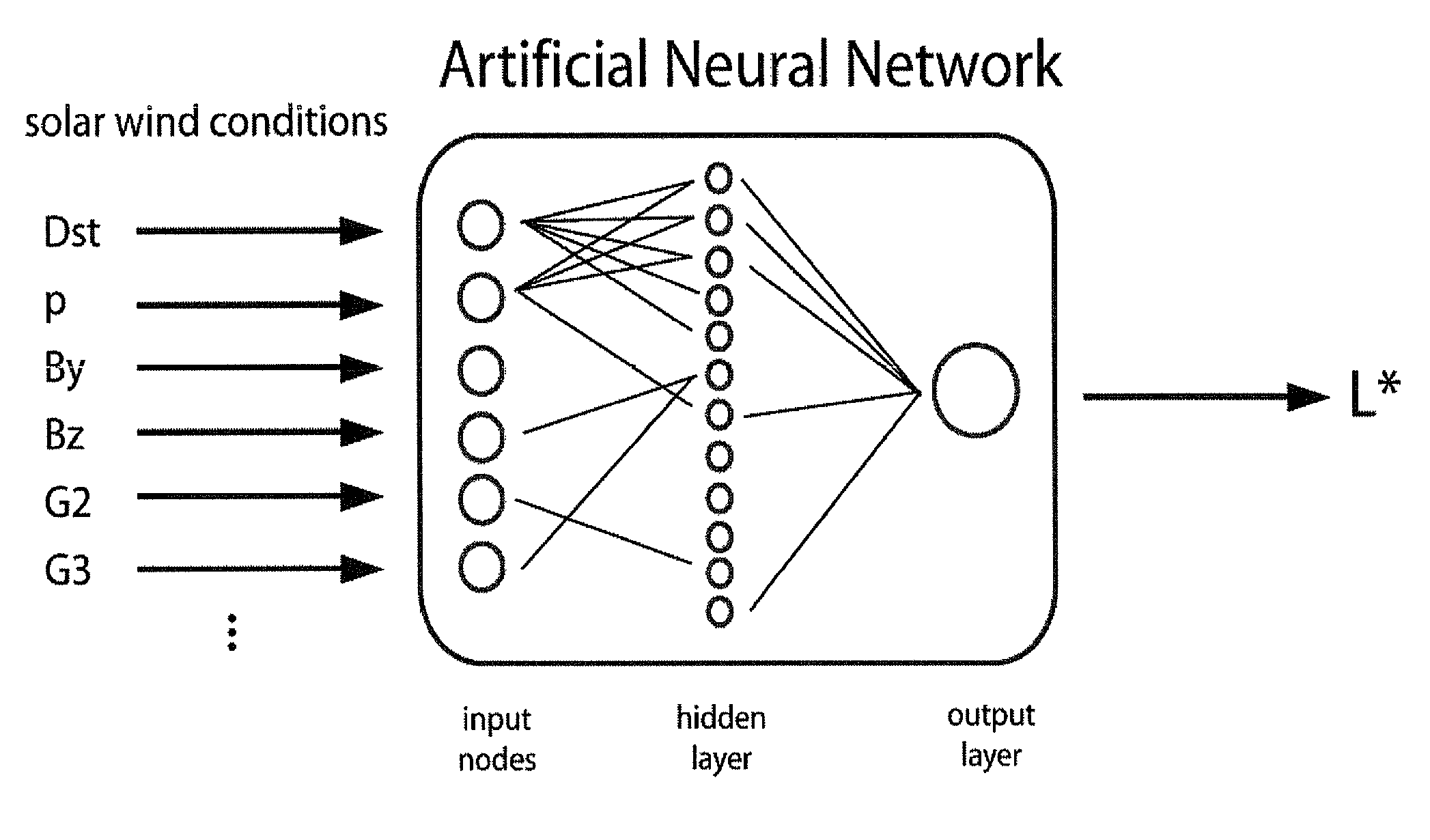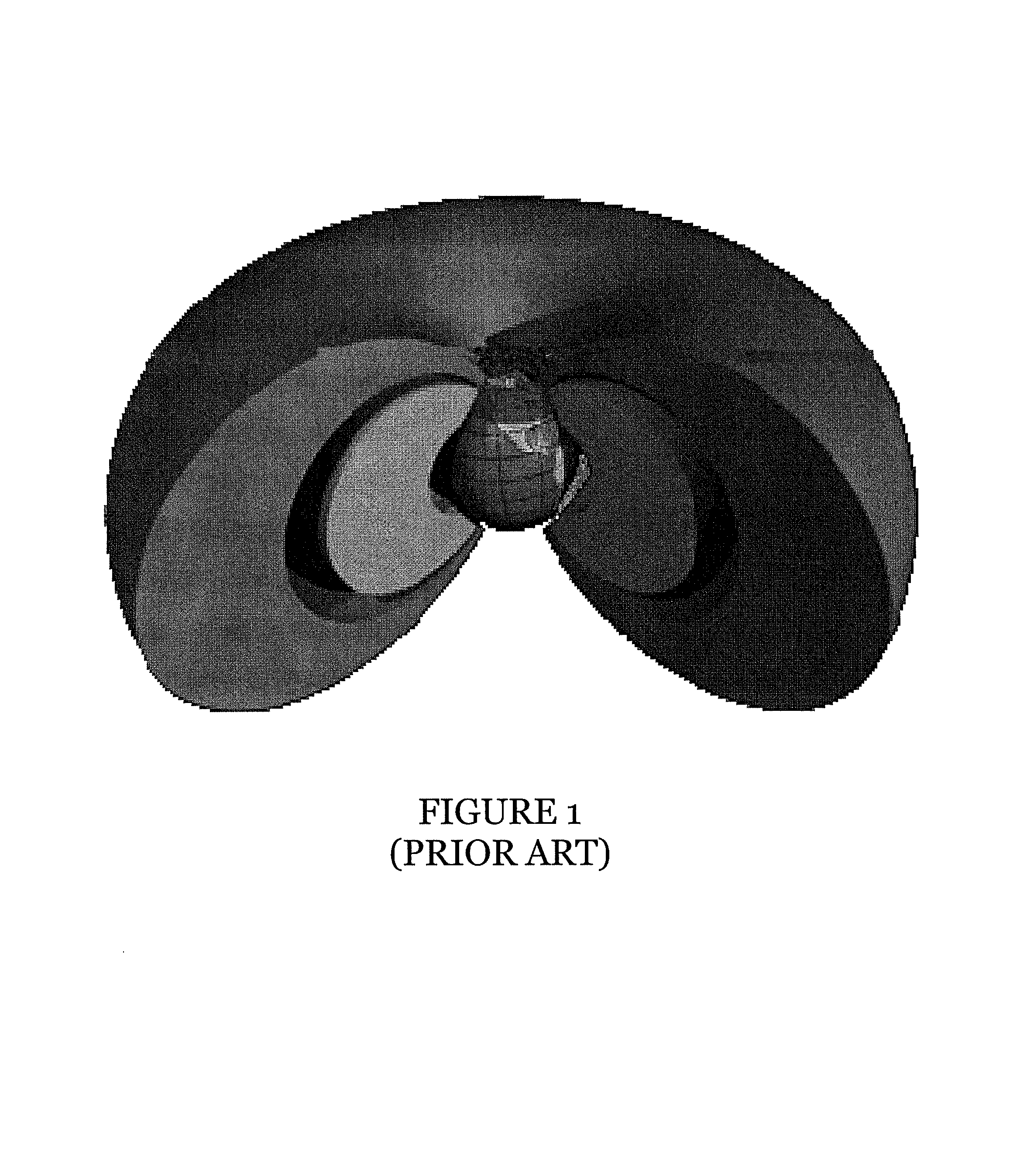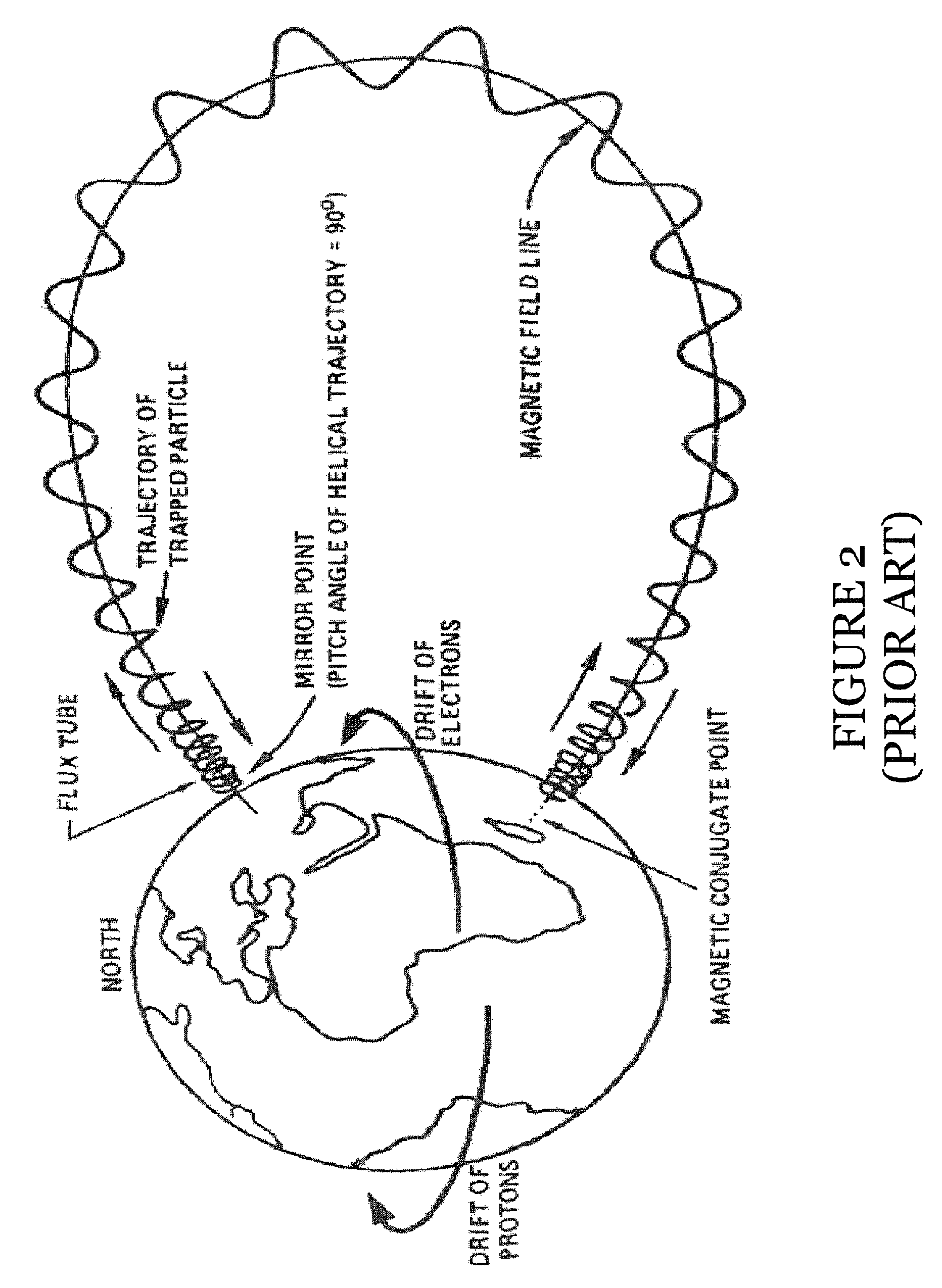Modeling of the radiation belt megnetosphere in decisional timeframes
a decision-timeframe and radiation belt technology, applied in computing models, instruments, biological models, etc., can solve the problems of space weather, a major risk to the satellites, and very serious economic investments in these satellites
- Summary
- Abstract
- Description
- Claims
- Application Information
AI Technical Summary
Benefits of technology
Problems solved by technology
Method used
Image
Examples
Embodiment Construction
[0059]Although the present invention is susceptible of embodiment in various forms, there is shown in the drawings and will hereinafter be described presently preferred embodiments with the understanding that the present disclosure is to be considered an exemplification of the invention and is not intended to limit the invention to the specific embodiments illustrated.
[0060]It is to be further understood that the title of this section of the specification, namely, “Detailed Description of the Invention” relates to a rule of the United States Patent and Trademark Office, and is not intended to, does not imply, nor should be inferred to limit the subject matter disclosed herein or the scope of the invention.
[0061]The present invention relates to a method of transforming the calculation of L* from one that uses a physics-based model that requires a plethora of small non-reusable steps, to one that uses a neural network as a surrogate model. With a trained neural network, a slow model c...
PUM
 Login to View More
Login to View More Abstract
Description
Claims
Application Information
 Login to View More
Login to View More - R&D
- Intellectual Property
- Life Sciences
- Materials
- Tech Scout
- Unparalleled Data Quality
- Higher Quality Content
- 60% Fewer Hallucinations
Browse by: Latest US Patents, China's latest patents, Technical Efficacy Thesaurus, Application Domain, Technology Topic, Popular Technical Reports.
© 2025 PatSnap. All rights reserved.Legal|Privacy policy|Modern Slavery Act Transparency Statement|Sitemap|About US| Contact US: help@patsnap.com



